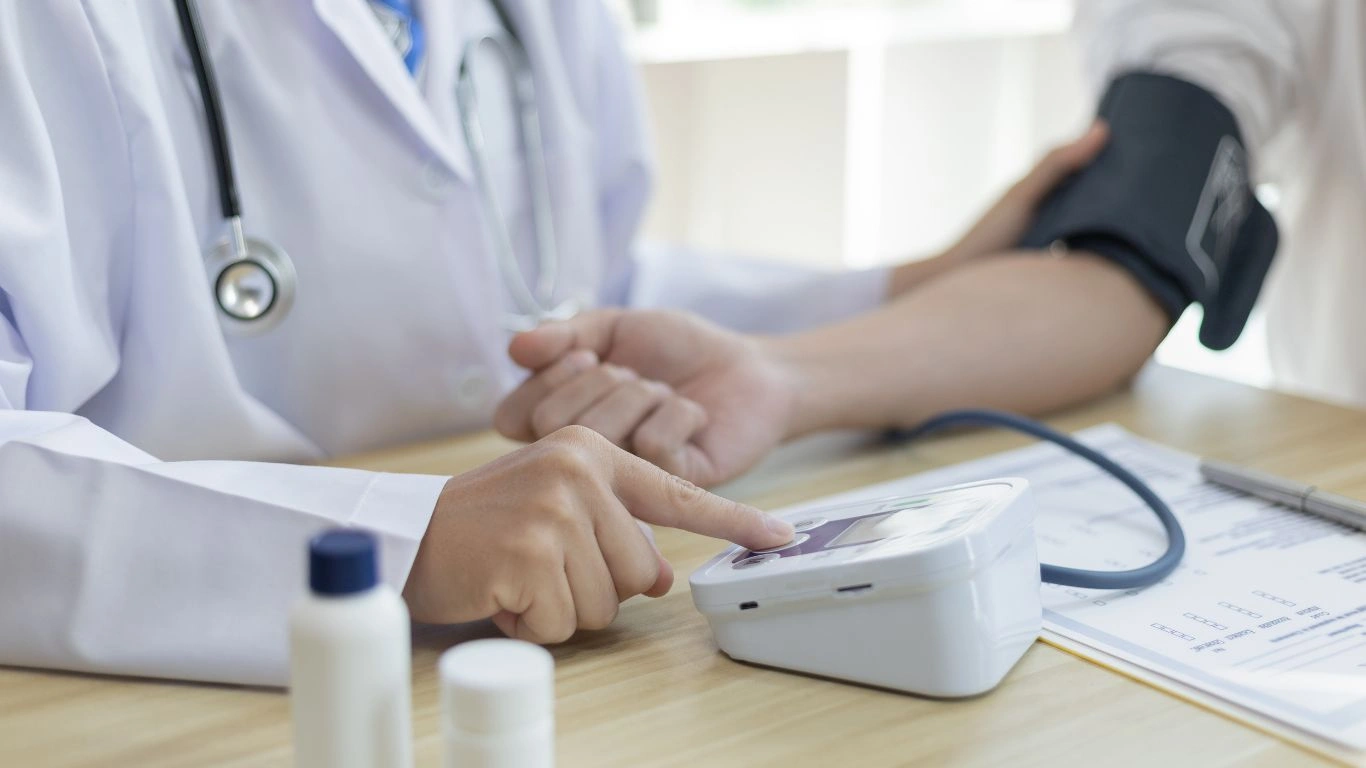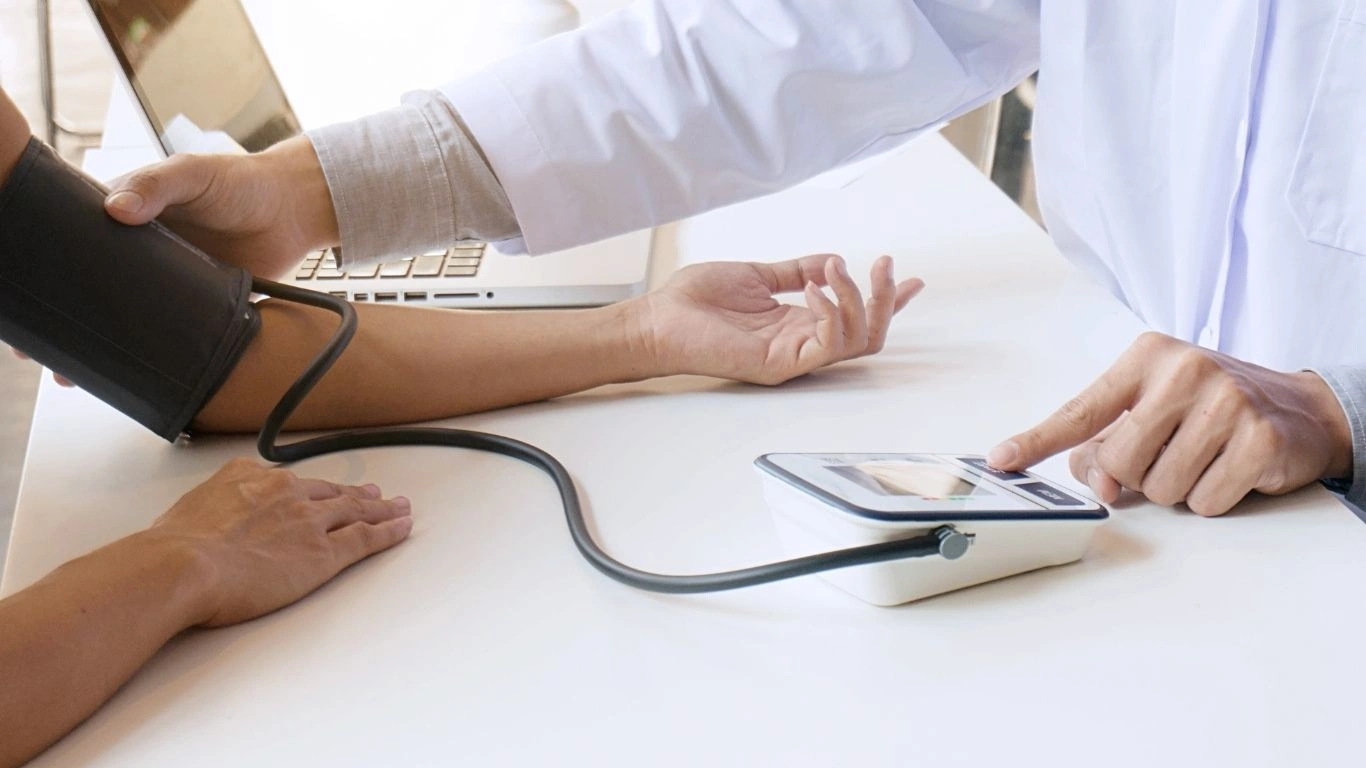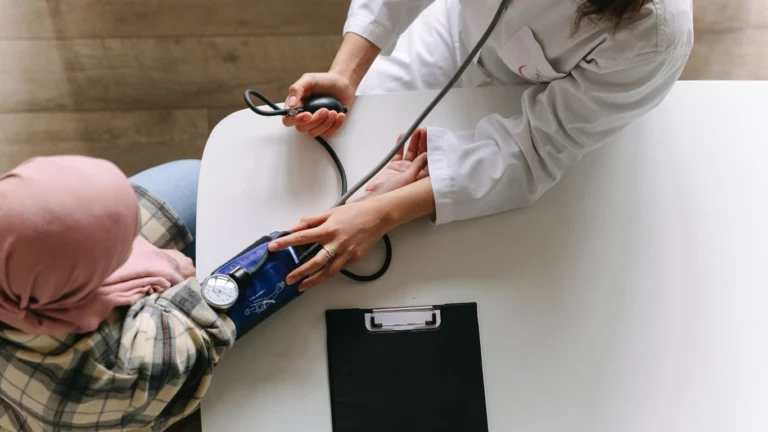How High Blood Pressure Destroys Arteries & Increases Stroke Risk
High blood pressure, or hypertension, is something I’ve spent years studying, diagnosing, and helping my patients manage. And let me tell you—it’s sneaky. You can feel perfectly fine while it silently wreaks havoc on your arteries. That’s why understanding how high blood pressure affects your arteries is crucial. It’s not just about numbers on a monitor—it’s about long-term damage that can lead to heart disease, stroke, and even kidney failure. So, let’s break it down in simple terms—no complex medical jargon, just the facts you need to protect your health.
What Happens to Your Arteries Under High Blood Pressure?

Picture your arteries as flexible, smooth highways that transport blood throughout your body. When your blood pressure is normal, these highways are open and flowing freely. But when hypertension kicks in, it’s like rush-hour traffic—constant, high-pressure flow that starts damaging the road itself.
Over time, this pressure does three main things to your arteries:
- It stiffens them: The constant force of high blood pressure makes your artery walls lose their flexibility, turning them into rigid, less efficient pathways.
- It narrows them: Damage to the artery lining causes a buildup of fatty deposits (plaques), which shrink the space for blood to pass through.
- It weakens them: If the pressure is high enough for long enough, it can cause small tears or even bulges (aneurysms) in the artery walls, increasing the risk of life-threatening ruptures.
The Role of Endothelial Damage: Your Arteries’ Protective Layer at Risk

Your arteries aren’t just hollow tubes—they have a thin, delicate layer called the endothelium. This lining plays a huge role in keeping your blood vessels healthy. But high blood pressure acts like a relentless storm, slowly chipping away at this protective layer.
How Does This Happen?
- Constant pressure weakens the endothelium: Think of it like a windshield constantly hit by heavy rain—it starts to wear down, forming tiny cracks.
- These cracks invite trouble: Once the endothelium is damaged, bad cholesterol and other substances sneak in, forming plaques.
- Inflammation joins the party: Your body tries to repair the damage, but in doing so, it causes inflammation, making things worse.
Now, instead of smooth, open arteries, you have narrow, rough pathways that force your heart to work overtime just to keep blood moving. And that’s where the real danger begins.
How Stiff and Narrowed Arteries Increase Your Risk of Heart Disease

When your arteries stiffen and narrow, your heart has to pump harder to push blood through. This extra workload increases your risk of heart attacks, strokes, and even kidney disease. If you’ve ever felt your heart pounding harder after climbing stairs, imagine it doing that every second of every day. Over time, this can lead to:
- Heart failure: The heart muscle gets overworked and weakens, making it unable to pump blood efficiently.
- Stroke: Blocked or burst arteries in the brain lead to strokes, which can cause paralysis or even be fatal.
- Kidney damage: Your kidneys rely on healthy blood flow to filter waste. When arteries are damaged, kidney function declines.
And the worst part? Most people don’t realize this is happening until it’s too late.
How High Blood Pressure Leads to Aneurysms: The Silent Threat

One of the scariest things about high blood pressure is how it silently weakens your arteries. If left unchecked, it can cause something called an aneurysm—a dangerous balloon-like bulge in the artery wall. I’ve seen patients come into my office with no symptoms at all, only to discover through routine scans that they have a ticking time bomb inside their body.
Here’s how it happens:
- Chronic high pressure stretches artery walls: Think of a garden hose under high pressure. If the pressure gets too high for too long, weak spots form.
- Aneurysms start as small bulges: Over time, the constant strain creates weak points in the artery where the wall starts to balloon out.
- They can rupture without warning: Aneurysms can go undetected for years. But when they burst, it’s a medical emergency—leading to severe internal bleeding, stroke, or even death.
The worst part? Most aneurysms give no warning signs. That’s why regular blood pressure checks are so important. If I had a dollar for every time a patient told me, “I feel fine,” only to discover dangerously high blood pressure, I’d be rich.
How Hypertension Accelerates Arterial Plaque Buildup (Atherosclerosis)

Another major issue with high blood pressure? It speeds up atherosclerosis, or the buildup of fatty plaques inside your arteries. This is what turns a healthy artery into a clogged, rigid pipeline that can’t deliver oxygen efficiently to your heart, brain, and other organs.
How Does Hypertension Fuel Atherosclerosis?
- More pressure = more damage: The higher the blood pressure, the more strain on the artery walls, making them more vulnerable to plaque deposits.
- Inflammation makes things worse: Hypertension triggers chronic inflammation, which speeds up plaque formation.
- It narrows critical arteries: When too much plaque builds up, it restricts blood flow, increasing the risk of heart attacks and strokes.
One of my patients, a 52-year-old man with a stressful job, had ignored his borderline high blood pressure for years. One day, he had chest pain while jogging. A hospital visit revealed 90% blockage in one of his coronary arteries—just a heartbeat away from a major heart attack. Fortunately, he got treatment just in time, but many people aren’t that lucky.
What This Means for Your Brain: The Stroke Connection
We often think of high blood pressure as a heart problem, but it’s just as dangerous for the brain. When arteries supplying the brain become stiff or clogged, the risk of stroke skyrockets.
Here’s how it plays out:
- Blood flow to the brain gets cut off: If a clot blocks a narrowed artery, it causes an ischemic stroke.
- Weakened arteries can burst: High pressure can cause fragile arteries in the brain to rupture, leading to a hemorrhagic stroke.
- Mini-strokes (TIAs) are warning signs: Some people experience transient ischemic attacks (TIAs), which are temporary blockages that should never be ignored.
I’ve had patients who ignored temporary dizziness or weakness in an arm, thinking it was nothing. Later, they suffered full-blown strokes. High blood pressure isn’t something to brush off—it’s a leading cause of stroke worldwide.
Protecting Your Arteries: The First Steps to Lowering Blood Pressure
The good news? Hypertension isn’t a one-way street. With the right lifestyle changes and medical care, you can protect your arteries and dramatically lower your risk of heart disease, stroke, and aneurysms.
Some key strategies include:
- Eating a heart-healthy diet: Focus on whole foods, lots of veggies, and reduce salt intake.
- Getting regular exercise: Even 30 minutes of walking a day can work wonders.
- Managing stress: Chronic stress can spike blood pressure—meditation, deep breathing, or even hobbies can help.
- Monitoring your numbers: If you don’t track your blood pressure, you can’t manage it.
I’ve had patients completely turn their health around just by making small, consistent changes. And trust me—it’s much easier to prevent damage than to reverse it once it’s already done.
Case Studies & Real-Life Examples

When talking about high blood pressure, I often think about the countless patients I’ve worked with over the years. Their stories are proof that hypertension doesn’t just exist on a medical chart—it’s a real-life battle that can change everything in an instant.
Case Study 1: The Executive Who Ignored the Signs
A few years ago, I had a patient—let’s call him John—who was a high-powered executive. Long hours, little sleep, coffee-fueled mornings, and stress-packed days were his normal routine. At 48, he felt fine, but his blood pressure was regularly in the 150/90 range. He brushed it off, saying he’d “deal with it later.”
Then, one day, John collapsed at work. A sudden stroke. The culprit? Years of unchecked high blood pressure had weakened an artery in his brain. He was lucky—he survived with only mild cognitive impairment. But his recovery took months, and he now regrets not taking his health seriously sooner.
Case Study 2: The Woman Who Reversed Hypertension Naturally
On the other hand, I’ve seen patients turn things around. Lisa, a 55-year-old teacher, came to me with a BP reading of 165/95. She was terrified—her mother had died from complications of hypertension. Determined to make a change, she overhauled her diet, started walking daily, and incorporated meditation into her routine.
Six months later, her blood pressure dropped to 125/80. No medications—just consistent lifestyle changes. She proved that small, steady efforts can make a massive difference.
Key Takeaways: What You Need to Remember
After diving deep into how high blood pressure affects your arteries, here are the key lessons you should walk away with:
- Hypertension silently damages arteries: You may feel fine, but your arteries are under constant stress.
- It increases the risk of heart attacks, strokes, and aneurysms: High blood pressure is a major contributor to life-threatening conditions.
- Prevention is easier than treatment: Simple changes—like eating better, reducing stress, and staying active—can protect your arteries.
- Regular blood pressure monitoring is crucial: You can’t fix what you don’t track. Know your numbers!
FAQs
Can high blood pressure damage arteries even if I have no symptoms?
Yes! Hypertension is called the “silent killer” for a reason. Most people don’t feel any symptoms until serious damage has already occurred.
Is medication the only solution?
No, but for some people, it’s necessary. Lifestyle changes can help, but in cases of severe hypertension, medication is often required to prevent complications.
How often should I check my blood pressure?
If you have normal readings, checking a couple of times a year is fine. But if you have high blood pressure or a family history, monitor it regularly—at least once a month or as advised by your doctor.
Bonus: Additional Resources & DIY Tips
Want to take control of your blood pressure starting today? Here are some easy, practical tips:
- Try the DASH diet: The DASH diet (Dietary Approaches to Stop Hypertension) is proven to lower BP.
- Reduce your salt intake: Swap out processed foods for whole, unprocessed options.
- Practice deep breathing: Just 5 minutes of slow, deep breathing can lower stress-induced spikes in BP.
- Get moving: Even a 15-minute walk can help lower blood pressure levels.
Appendix: References, Disclaimer & Call to Action
For more in-depth information, check out these trusted resources:
- CDC – High Blood Pressure
- American Heart Association – Hypertension
- National Heart, Lung, and Blood Institute
Disclaimer: This article is for informational purposes only and does not replace professional medical advice. Always consult your healthcare provider regarding any health concerns.
Take action today! Monitor your blood pressure, make heart-healthy choices, and don’t wait until it’s too late. If you found this article helpful, share it with friends and family—knowledge saves lives!

Dr. Gwenna Aazee is a board-certified Internal Medicine Physician with a special focus on hypertension management, chronic disease prevention, and patient education. With years of experience in both clinical practice and medical writing, she’s passionate about turning evidence-based medicine into accessible, actionable advice. Through her work at Healthusias.com, Dr. Aazee empowers readers to take charge of their health with confidence and clarity. Off the clock, she enjoys deep dives into nutrition research, long walks with her rescue pup, and simplifying medical jargon one article at a time.






